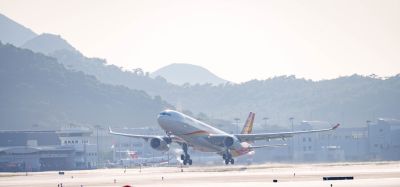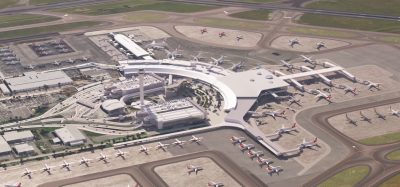Twelve-month summer: friction testing at Arlanda
- Like
- Digg
- Del
- Tumblr
- VKontakte
- Buffer
- Love This
- Odnoklassniki
- Meneame
- Blogger
- Amazon
- Yahoo Mail
- Gmail
- AOL
- Newsvine
- HackerNews
- Evernote
- MySpace
- Mail.ru
- Viadeo
- Line
- Comments
- Yummly
- SMS
- Viber
- Telegram
- Subscribe
- Skype
- Facebook Messenger
- Kakao
- LiveJournal
- Yammer
- Edgar
- Fintel
- Mix
- Instapaper
- Copy Link
Posted: 11 September 2006 | Pär Blom, Training Officer – Field Department, Stockholm/Arlanda Airport | No comments yet
To ensure the safe take-off and landing of aircraft, it is essential for airports to provide pilots with an accurate assessment of runway surface conditions. Pär Blom explains the principles behind friction testing, one of aviation’s least celebrated, but most critical procedures.
To ensure the safe take-off and landing of aircraft, it is essential for airports to provide pilots with an accurate assessment of runway surface conditions. Pär Blom explains the principles behind friction testing, one of aviation’s least celebrated, but most critical procedures.
There is general concern in the industry regarding the adequacy of the available friction between aeroplane tyres and the surface of the runway under certain operating conditions. This concern is particularly focused on conditions such as snow, slush, ice or water on the runway and when aeroplane take-off or landing speeds are high.
This concern is more acute for jet aeroplanes, since the stopping performance of these aeroplanes is even more dependent on the available friction between the tyres and the runway surface. Their landing and take-off speeds are high, and in some cases the length of runway required for landing or take-off can be critical compared with the length that is actually available. In addition, directional control may become impaired in the presence of cross-winds.
There is a requirement to report the available friction value and presence of snow, slush, ice or water on a runway, as well as to make an assessment of the depth and location of snow, slush or water. Reports of assessment of contaminant depth and the friction value on a runway will be interpreted differently by the operator for the take-off, compared with the landing. For take-off, operators will have to take into account the contaminant drag effect and, if applicable, aquaplaning on take-off and accelerate-stop distance requirements, based on information which has been made available to them. The friction value is also important for take-off operators if there has to be an abrupt take-off. With regard to landing, the principal hazard is loss of friction due to aquaplaning or compacted snow or ice.
The history of friction testing
In the beginning of air traffic history, propeller-driven aeroplanes only had a landing speed of 60-100 km/h, compared to today’s jet aeroplanes with a landing speed of 250-360 km/h. In the past, the issue of friction testing wasn’t so important – airport operators simply used their feet to assess if it was slippery or not! Sometimes, operators would use a bicycle or a car (circa 1930 – before Stockholm/Arlanda Airport was constructed). After the feet friction test came the tapleymeter. This is a small measuring device that is fitted to a car, which is driven up to 30 km/h. The driver then hits the brakes and a friction value is provided. This equipment is still used at smaller airports today. When the jet aeroplanes began to take over air traffic, the friction coefficient had to be more accurate. The Swedish Civil Aviation Administration (SCAA) worked together with a road institute to manufacture a device that could measure friction coefficient which could be compared with the braking of a jet aeroplane. They built a trailer that weighed 3300kg, was manually programmed and towed by a lorry. This was only in use for a short time because it was very difficult to handle. After this experience they built lighter trailers at 1500 kg, 600 kg 350 kg.
All of these were built to the same principle and structure, with an extra wheel to measure friction coefficient. The smallest of these is still in use at larger airports today (skiddometer). In the early 1980s, SAAB began to build friction tester automobiles that had an extra wheel under the car (SFT surface friction tester). At Arlanda we used them until the mid-1990s, when we began to use a new model of friction tester called SFH (surface friction high-pressure tester) with a 700 kPa high-pressure measuring wheel. The measuring wheel has a constant slip of about 15 per cent and is lowered on to the surface with pressure. There is a chain transmission to the rear axle. On this chain you can measure the tension: when the chain is tight = good friction, loose chain =poor friction.
Friction testing at Arlanda
At Stockholm/Arlanda airport, friction is measured from 1,0 down to 0,01. If the friction coefficient is 1,0 high friction, you can compare it with a stop distance as short as 0 metres (1,0 is impossible to get). If the friction coefficient is 0,01 non friction (the speed will not decrease). For the friction coefficient there is a special scale that calculates the figure.
Measured or calculated coefficient Estimated surface friction
0,40 and above Good -5
0,39-0,36 Medium/Good -4
0,35-0,30 Medium -3
0,29-0,26 Medium/Poor -2
0,25 and below Poor -1
9- unreliable Unreliable -9
When we measure the friction on the runway using an SFH, we measure the whole length and both sides of the runways at a speed of 96km/h, with a measuring point 5-10 metres from the centreline. When the measuring is complete, we report the friction coefficient together with the contamination details to Air Traffic Service (ATS) and the flight planning centre (AIS). To report the condition on the runways we use a special sheet called snowtam. We are required to examine the conditions on the runways four times during a period of 24 hours. The 24-hour period starts before the first known take-off or landing in the morning. If the friction coefficient increases more than 0,05 units, we have to take a new measurement and provide a new snowtam report. For the purposes of reporting, the runway will be divided into three equal parts and named sections A, B and C. A will always be assigned to the runway with the lowest runway number. When the friction coefficient drops below 0,40 we will take steps to increase the runway’s friction coefficient. We use different methods, both mechanical and chemical. If the friction coefficient is above 0,40, aeroplane operators don’t need to take the friction coefficient into consideration during landing or take-off.
At Stockholm/Arlanda airport our goal is to maintain summer conditions on the runways all year round: even in the winter.
The history of Arlanda
Arlanda was first used for practice flights in 1959. In 1960, it was opened for the first time to general traffic, followed by an official opening ceremony in 1962. The name was thought up as part of a competition prior to the airport’s official opening and is derived from Arland, an old name for the parish Ärlinghundra (now Husby-Ärlinghundra in Märsta) where the airport is situated. The ‘a’ was added in analogy with other Swedish place names ending with -landa, and also makes the name a pun on the Swedish verb ‘landa’, which means ‘to land’.
Reference
ICAO Airport Services Manual, 4th edition-2002, doc 9137.

















